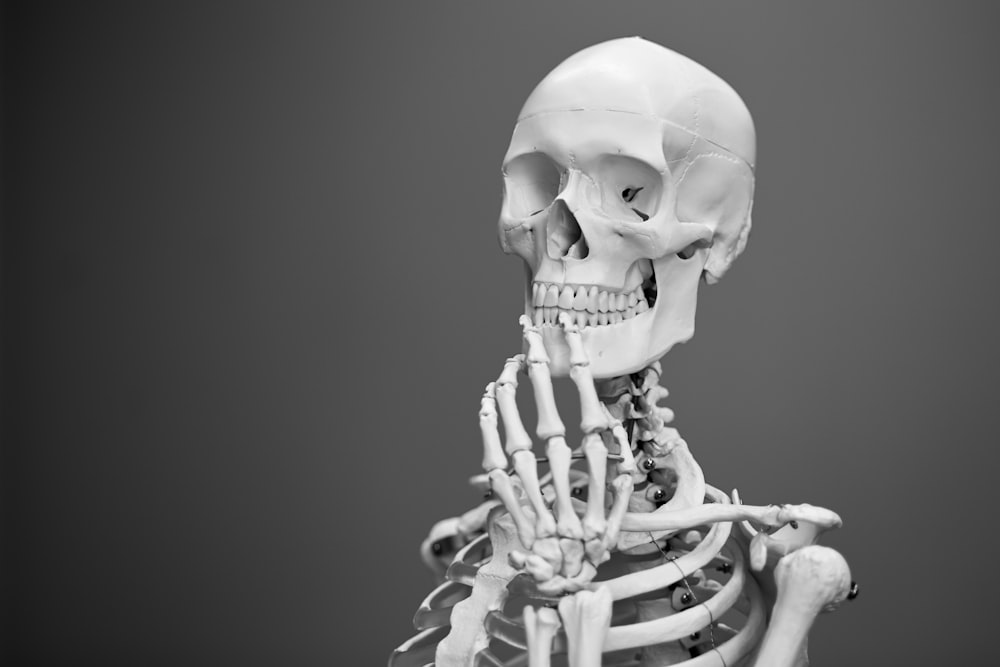目次
衝撃を加えた運動が高齢者の骨密度低下を抑制
本邦における高齢化は著しく高齢化に伴って骨脆弱性骨折の発生数も増加しております.
骨脆弱性骨折を考えるうえで欠かすことができないのが骨粗鬆症の予防です.
しかしながら骨粗鬆症に対する運動療法のエビデンスってあまり多くありません.
今回は骨粗鬆症の予防にどういった運動が有効なのかを考えるうえで参考になる論文をご紹介させていただきます.

今回ご紹介する論文
Bone. 2024 Jan:178:116951. doi: 10.1016/j.bone.2023.116951. Epub 2023 Oct 31.
Changes in femoral neck bone mineral density and structural strength during a 12-month multicomponent exercise intervention among older adults – Does accelerometer-measured physical activity matter?
T Savikangas 1, T H Suominen 2, M Alén 3, T Rantalainen 4, S Sipilä 5
Affiliations expand
PMID: 37913888 DOI: 10.1016/j.bone.2023.116951
今回ご紹介する論文は2024年に掲載された論文です.
研究の目的
Age-related bone loss is to some extent unavoidable, but it may be decelerated with regular exercise continued into older age. Daily physical activity alongside structured exercise may be an important stimulus for maintaining bone strength, but the relationships of habitual physical activity with bone strength are sparsely investigated in older adults. Therefore, the main aim was to investigate if accelerometer-derived impact-based and intensity-minute-based measures of physical activity were associated with changes in femoral neck bone traits during a 12-month exercise intervention among community-dwelling older men and women.
加齢に伴う骨量の減少はある程度避けられませんが,高齢になっても定期的な運動を継続することで,骨量の減少を抑制できる可能性があります.
構造化された運動と並行して行う日常的な身体活動は,骨強度を維持するための重要な刺激となる可能性がありますが,高齢者における習慣的な身体活動と骨強度との関係についてはほとんど調査されておりません.
したがってこの研究では加速度計による衝撃ベースおよび強度分ベースの身体活動測定が,地域居住の高齢男女を対象とした12ヵ月間の運動介入中の大腿骨頸部骨形質の変化と関連するかどうかを調査することを目的としております.
研究の方法
Data comes from the PASSWORD study (ISRCTN52388040), a year-long multicomponent exercise intervention. Participants were 299 older adults (mean age 74 ± 4 years, 58 % women), who self-reported not to meet the physical activity guidelines for older adults but did not have any contraindications for exercising. The multicomponent training program included both supervised and self-administered exercises aimed at improving muscle strength, postural balance, and aerobic endurance. Physical activity was assessed at baseline and at six months into the intervention, and femoral neck bone properties at baseline and at twelve months. Physical activity measures were accelerometer-measured mean daily osteogenic index score, low, medium, and high intensity impact counts, and sedentary, light, and moderate-to-vigorous intensity activity minutes. Femoral neck bone mineral density (BMD) was measured with DXA and structural strength indicators (cross-sectional area [CSA] and section modulus) were subsequently derived from hip structural analysis. Longitudinal associations of physical activity and bone outcomes were analyzed with generalized estimating equation linear models. Sex was included as a moderating factor, and models were further adjusted by potentially confounding factors (age, height, weight, smoking status, medications, chronic disease conditions, and strength training adherence). Participants increased their physical activity by all measures and decreased their sedentary time from baseline to six months. BMD decreased from baseline to post-intervention, while CSA maintained stable and section modulus slightly increased.
データはPASSWORD研究(ISRCTN52388040)から得られたもので,1年間の多成分運動介入であります.
対象は299例の高齢者(平均年齢74±4歳、58%が女性)で,高齢者のための身体活動ガイドラインを満たしていないと自己申告しましたが,運動の禁忌はありませんでした.
マルチコンポーネントトレーニングプログラムには筋力,姿勢バランス,有酸素性持久力の向上を目的とした指導付きエクササイズと自己管理エクササイズの両方が含まれておりました.
身体活動はベースライン時と介入開始6ヵ月時に,大腿骨頸部骨特性はベースライン時と12ヵ月時に評価を行っております.
身体活動の指標は加速度計で測定した1日の平均骨形成指数スコア低・中・高強度の衝撃回数,座位,軽度,中~強度の活動分量としておりました.
大腿骨頸部骨密度(BMD)はDXAで測定し,構造強度指標(断面積[CSA]と断面弾性率)は股関節構造解析から導き出しております.
身体活動と骨量に関するアウトカムの縦断的関連は,一般化推定方程式線形モデルを用いて解析しておりました.
性別は調整因子として含まれ,モデルはさらに潜在的交絡因子(年齢,身長,体重,喫煙状態,投薬,慢性疾患状態,筋力トレーニングのアドヒアランス)によって調整されました.
研究の結果
Osteogenic index, high impacts, and moderate-to-vigorous intensity physical activity, measured across the first half of the study, were positively associated with changes in BMD over 12 months (time х physical activity interaction effect: ß = 0.065, 95 % CI [0.004, 0.126]; ß = 0.169, 95 % CI [0.048, 0.289]; and ß = 0.151, 95 % CI [0.016, 0.286], respectively). That is, the higher the physical activity was, the smaller was the decline in BMD. Any physical activity measure was not associated with changes in CSA or section modulus in the full study sample. Sex did not significantly moderate the longitudinal associations, except the association between sedentary time and CSA (sex х time х PA interaction effect: ß = -0.017, 95 % CI [-0.033, -0.002]). An inverse association was found between sedentary time and changes in CSA in women, but not in men. In conclusion, BMD decline was less pronounced in individuals who accumulated more accelerometer-measured daily physical activity at the intensity of very brisk walking or light lateral jumping or higher intensities in a sample of relatively healthy, previously physically inactive older adults.
ベースラインから6ヵ月後まですべての指標で身体活動量を増加し,座位時間が減少しました.
BMDはベースラインから介入後まで減少しましたが,CSAは安定を維持し,断面係数はわずかに増加しました.
研究の前半にわたって測定された骨形成指数,高負荷,中等度から活発な強度の身体活動は12ヵ月間のBMDの変化と正の関連がみられました(時間х身体活動の交互作用効果: それぞれß = 0.065, 95 % CI [0.004, 0.126]; ß = 0.169, 95 % CI [0.048, 0.289]; ß = 0.151, 95 % CI [0.016, 0.286]).
すなわち身体活動量が高いほどBMDの低下は小さい結果でありました.
どの身体活動指標も全調査標本におけるCSAや断面係数の変化とは関連しませんでした.
性差は座位時間とCSAの関連を除き,縦断的な関連を有意に緩和しなかった(性差х時間хPAの交互作用効果:ß = -0.017, 95 % CI [-0.033, -0.002]).
女性では座位時間とCSAの変化の間に逆相関が認められましたが,男性では認められませんでした.
結論として比較的健康でこれまで運動不足であった高齢者のサンプルにおいて,加速度計で測定した毎日の身体活動の強度が,非常に早歩き,または軽い横跳び,またはそれ以上の強度の身体活動をより多く積み重ねた人では,BMDの低下がより顕著でありませんでした.
研究の結論
Our findings support that accumulating the recommended amount of 150 or more weekly minutes of moderate-to-vigorous physical activity is also beneficial for older adults’ bone health when incorporated into a multicomponent exercise program.
推奨される150分以上の中等度から強度の身体活動を週1回積み重ねることが,マルチコンポーネントの運動プログラムに組み込まれた場合,高齢者の骨の健康にも有益であることが示唆されました.
今回は骨粗鬆症の予防にどういった運動が有効なのかを考えるうえで参考になる論文をご紹介させていただきました.
今回の結果から考えると一定以上の身体活動量を維持することが骨粗鬆症の予防につながるものと考えられます.
また骨粗鬆症の予防に対しては骨に一定以上の負荷を加えるインパクトトレーニングが有効だと考えられます.






